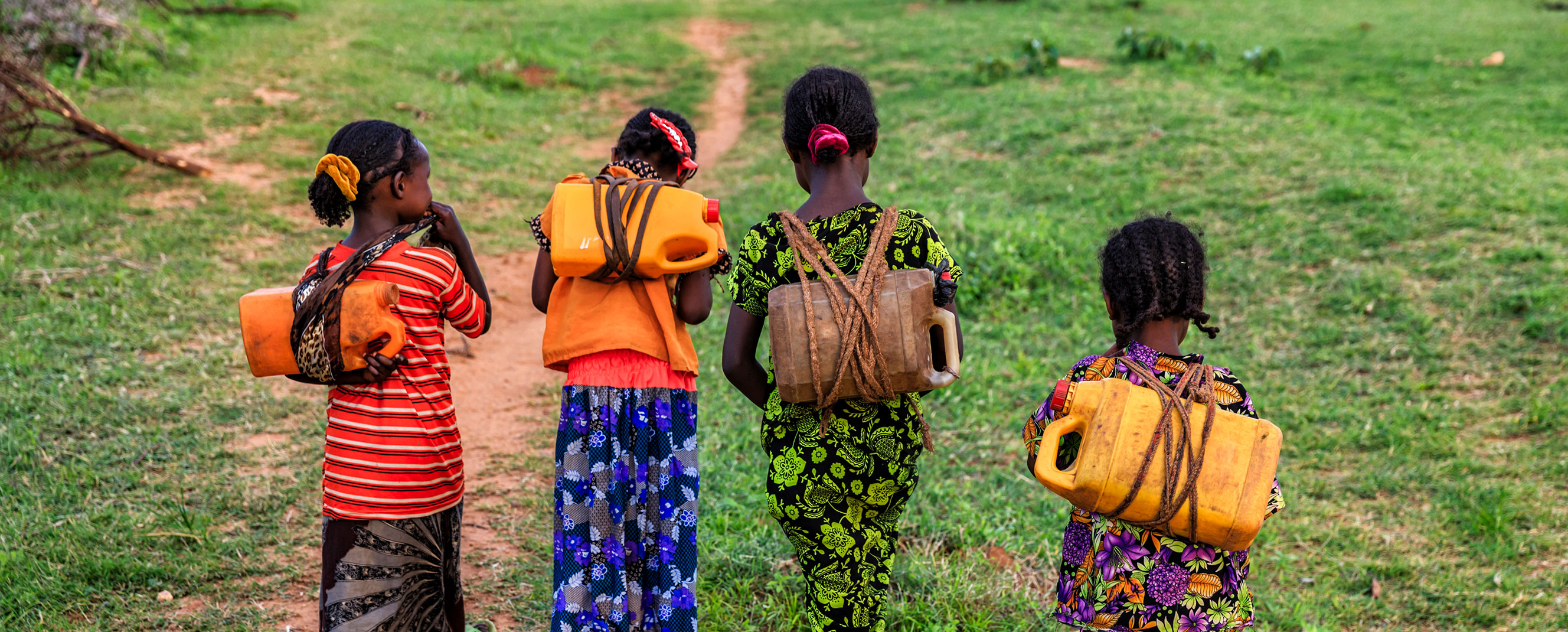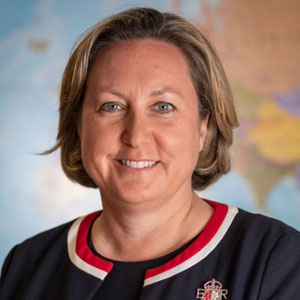Women and girls are more vulnerable to the effects of climate change and pay a higher price
It is a great injustice of our time that those who have contributed least to global emissions are hit hardest by the effects of climate change. Developing economies and small island states are battling our changing climate, from more frequent natural, climate-linked disasters to rising temperatures and sea levels.
Even more shocking, these effects disproportionately burden the most marginalized in these societies, including women and girls.
Galvanizing action to support countries and communities on the front line of climate change is one of the UK’s four goals for our UN Climate Change Conference (COP26) presidency, alongside cutting emissions, getting finance flowing, and fostering collaborative action. But none of this can happen unless we acknowledge and act on the disproportionate and gendered impacts of climate change and enable women and girls to participate in education, the economy, leadership, and decision-making.
The participation of women and girls, as well as other marginalized groups, is central to a successful COP26. As part of the presidency’s program, we will host a day dedicated to advancing gender equality and meaningful participation by women and girls in climate action.
Because climate change is not gender-neutral. Gender inequality means that women and girls are more vulnerable to the effects of climate change in the first place and experience worse outcomes as a result of it. On recent visits to Ghana, Egypt, Costa Rica, and Malawi, I’ve heard from many women about the challenges and risks they face on a daily basis.
In its flagship report, Adapt Now, the Global Commission on Adaptation, cochaired by IMF Managing Director Kristalina Georgieva, points out that when climate adaptation intervention ignores gender inequalities—including reduced access to education and employment opportunities—it only deepens existing vulnerabilities and encourages new types of exclusion.
We cannot tackle climate change effectively unless we place inclusion front and center and address broader discrimination, sociocultural barriers, and inequalities that enhance vulnerability.
Connecting the dots
Let’s take one of the 200 million adolescent girls in the world’s poorest communities and explore how inequalities translate into increased vulnerability to climate change.
She may live in a rural community that is very dependent on natural resources made increasingly scarce by climate change. She may be forced to drop out of school—if she ever even attended—to collect water and support her household.
As the burden on the household increases, and without an education, skills, or financial independence, she’ll likely be married off early, becoming one of the 700 million women today who married before the age of 18. In Malawi alone, it is estimated that more than 1.5 million girls marry early as a direct result of climate change.
According to IMF research, average female participation in the workforce is 20 percentage points lower than their male counterparts, largely because of a persistent lack of opportunities, particularly in accessing education.
Cultural barriers and economic stress, a lack of education, and gender norms mean that our adolescent girl is now a wife and mother and responsible for securing food, water, and fuel for her family. Rising temperatures and decreased rainfall make this harder, preventing her from participating in the economy, her community, and decision-making. She may even have to take her own children—most likely her daughters—out of school to help.
She also faces unequal access to resources. With land and credit, she and other women could more easily adapt to climate trends and withstand climate shocks. Women play a major role in the agricultural sector yet hold less than 15 percent of the world’s land. In Africa, four in five women lack access to an account at a formal financial institution. In Costa Rica, women told me that a male head of household must approve land acquisition.
The Adapt Now report found that agricultural institutions underinvest in seeds, climate services, and insurance packages for crops predominantly tended by women. It also highlighted that financial institutions’ lending packages are often inaccessible to women, despite evidence they are more reliable borrowers.
So daily life is hard enough, but when a climate-related disaster hits, women are more likely to die than men. More time spent indoors puts them at greater risk; male relatives are outside with better options to find safety. Boys are more likely to be taught to swim and climb trees than girls and are shown preferential treatment in rescue efforts.
Women and girls are then more likely to suffer from food shortages and poor hygiene in the aftermath of disasters. We know gender-based violence increases in temporary shelters, and women often turn to transactional sex to cope with their displacement and poverty.
A pessimistic picture, but a sad reality for women and girls around the world.
Targeted support to women and girls
Foregrounding gender equality in climate action and an inclusive and resilient recovery from COVID-19 mean that we—as developed economies, donor institutions, and policymakers—can dramatically decrease the vulnerability of those on the front line, secure development gains, and advance gender equality.
To achieve these goals, we must target support to women and girls, by ensuring that our finance is truly gender-responsive; it must empower women to participate in a transition to an inclusive, green economy, with front-line female access to finance.
Central ministries of finance and planning can play a vital role by integrating both climate risks and differentiated impacts on women into planning procedures. They should target budgetary spending to education and paid employment opportunities for women and direct social protection programs to enhance benefits for women, while supporting food security and climate-resilient investments.
The UK’s £11.6 billion international climate finance investment will integrate gender-responsive and inclusive approaches into the design, delivery, and assessment of our programs over the next five years.
The UK also joined the Feminist Action for Climate Justice Coalition at the Generation Equality Forum earlier this year and affirmed our commitment to championing leadership by women and girls, education, and climate action decision-making, while working to build their resilience to climate change.
If we all join in such efforts, we have a real chance to rewrite our girl’s story.
Instead of leaving school early, our adolescent girl could be one of 326,000 girls who returned to school, thanks to UK funding, after cyclones Idai and Kenneth in southern Africa.
At school, she’s learned valuable skills and gained the knowledge to thrive in our changing world. She wasn’t married off early and is instead empowered to find stable work, gain financial independence, increase her access to land and credit, and diversify her income, learning climate-sensitive farming. Women I met in Ghana told me of their cooperative, ”CocoaWomen,” through which they share ideas and best practices and support one another.
Our adolescent girl has become a powerful agent of change in her local community, building not only her own resilience to climate impacts, but also her community’s.
A time to act
With its COP26 presidency, the UK is calling on all countries and institutions to step up their commitments to advance gender equality through climate action and to ensure that more girls enjoy this positive experience instead of the first outcome described.
The Gender Action Plan of The United Nations Framework Convention on Climate Change sets out clear objectives and principles for climate policy, finance, and action that is gender-responsive. It considers the unique impacts on women and girls and the importance of equal access and equal outcomes for all. We call on all policymakers and decision-makers to use these principles to inform their action.
COP26 will be a real moment for the voices of women and girls, as well as for other, often marginalized, communities to be heard and supported.
And we, as leaders, policymakers, and decision-makers, must be able to point to progress in supporting approaches, programs, and policies that directly target the gendered impacts of climate change.
As we count down to COP26, we can all play a role in writing a happier ending for women and girls across the world.
Opinions expressed in articles and other materials are those of the authors; they do not necessarily reflect IMF policy.









